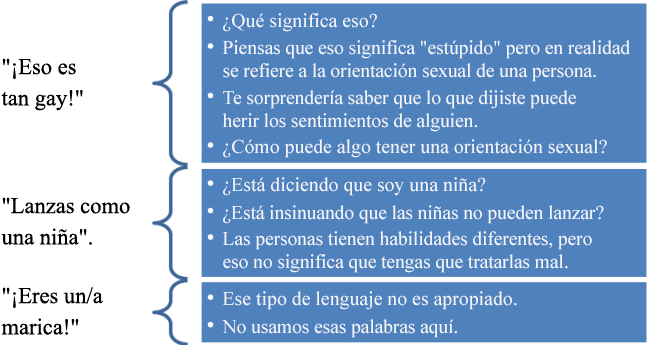La mayoría de los expertos reconocen que el acoso es un problema grave con consecuencias negativas para los agresores y para las víctimas. Sin embargo, sabemos muy poco sobre la forma en la que el acoso en los primeros años de edad afecta las conductas en la adultez.
Hace muchos años, los Centros para la Prevención y el Control de Enfermedades comenzó una alianza con investigadores de la Universidad de Illinois, Urbana-Champaign, para entender mejor la relación entre acoso y violencia sexual. Cuando hablamos de "violencia sexual", nos referimos a un tipo específico, el hostigamiento sexual, que no incluye actos forzosos como la violación. It's important to know whether youth who engage in bullying behavior are also at risk for sexually harassing their peers. This information can help us prevent sexual harassment from occurring in the first place.
Key Terms
- Acoso escolar: El acoso es un comportamiento agresivo y no deseado entre niños en edad escolar que involucra un desequilibrio de poder real o percibido.
- Homophobic Teasing: Negative attitudes and behaviors directed toward individuals who identify as or are perceived to be lesbian, gay, bisexual, or transgendered.
- Sexual Harassment: Includes comments, sexual rumor spreading, or groping.
For three years, we surveyed over 1,300 middle school youth yearly. Los jóvenes nos contaron sus experiencias de acoso sexual y acoso escolar hacia otros, al igual que si usaban frases como "homo, gay, lesbiana, marica o maricón" para provocar a otros estudiantes.
Esto es lo que descubrimos…
- 12% of females and 12% of males bullied others
- 34% of males and 20% of females teased a friend by calling him/her names like homo, gay, lesbo, fag or dyke (i.e., homophobic teasing)
- 34% of males and 28% of females made sexual comments to other students
- 5% of males and 7% of females spread a sexual rumor about another student
When we examined how these behaviors changed over the three years, we found that students who bullied others and teased others using homophobic slurs in 6th grade were more likely to tell us that they sexually harassed other students in 7th grade. This suggests that both bullying behaviors and homophobic teasing behaviors may be precursors to later sexual harassment behaviors, as the youth get older.
So, how do we build roadblocks to prevent our students from bullying, homophobic teasing, and sexually harassing others? We must change the dialogue! Here are some suggestions to consider when working directly with youth:
If you hear this... You can say this...

Learn more about bullying and specific groups.

